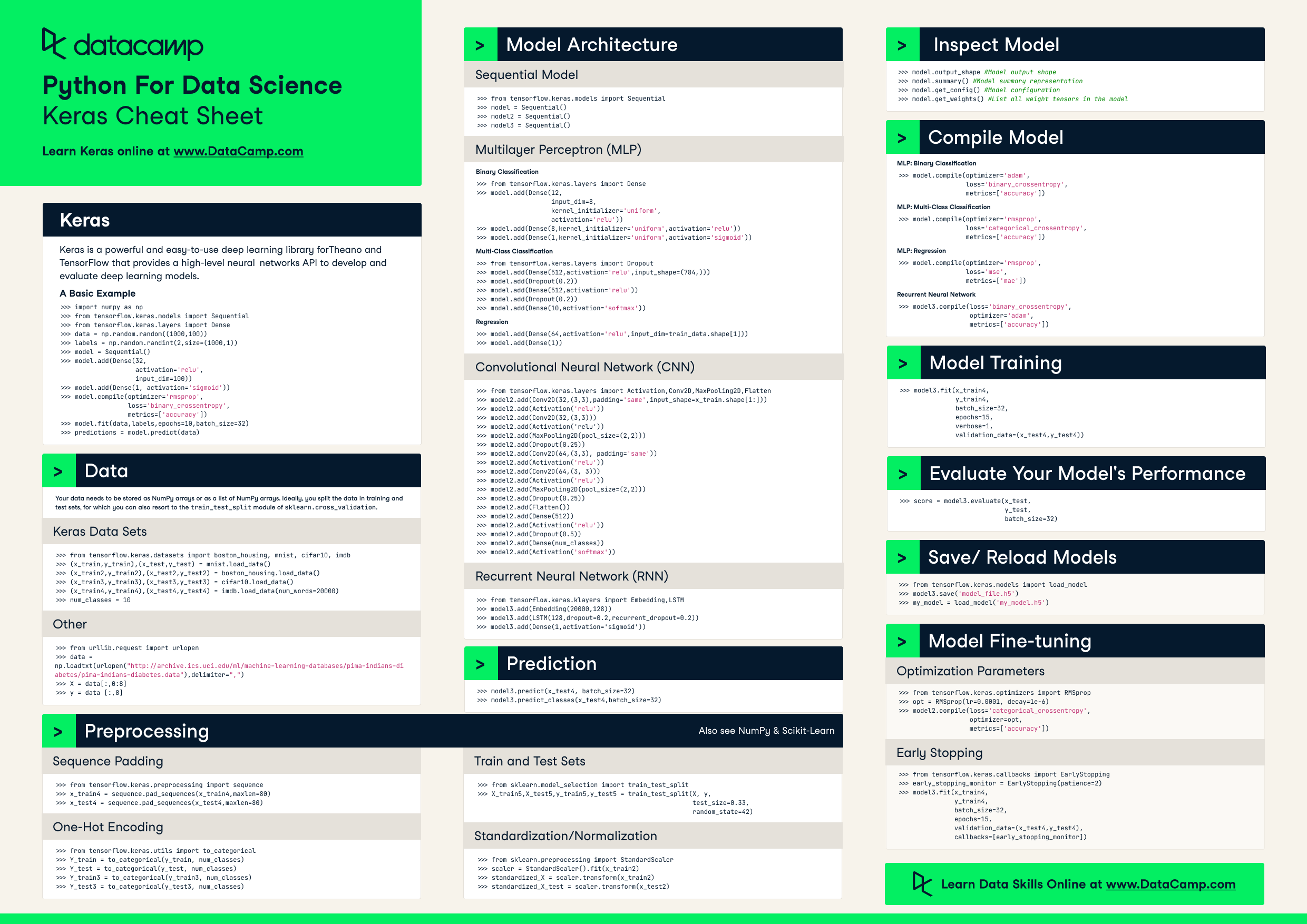Keras Cheat Sheet: Neural Networks in Python
Make your own neural networks with this Keras cheat sheet to deep learning in Python for beginners, with code samples.
Updated Jun 2021 · 5 min read
RelatedSee MoreSee More
What is Llama 3? The Experts' View on The Next Generation of Open Source LLMs
Discover Meta’s Llama3 model: the latest iteration of one of today's most powerful open-source large language models.
Richie Cotton
5 min
Attention Mechanism in LLMs: An Intuitive Explanation
Learn how the attention mechanism works and how it revolutionized natural language processing (NLP).
Yesha Shastri
8 min
Top 13 ChatGPT Wrappers to Maximize Functionality and Efficiency
Discover the best ChatGPT wrappers to extend its capabilities
Bex Tuychiev
5 min
A Comprehensive Tutorial on Optical Character Recognition (OCR) in Python With Pytesseract
Master the fundamentals of optical character recognition in OCR with PyTesseract and OpenCV.
Bex Tuychiev
11 min
An Introduction to Vector Databases For Machine Learning: A Hands-On Guide With Examples
Explore vector databases in ML with our guide. Learn to implement vector embeddings and practical applications.
Gary Alway
8 min
Encapsulation in Python Object-Oriented Programming: A Comprehensive Guide
Learn the fundamentals of implementing encapsulation in Python object-oriented programming.
Bex Tuychiev
11 min
